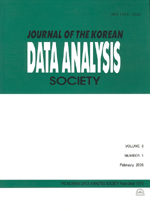에너지 상대가격과 전력수요 관계분석
Energy Relative Prices and Electricity Demand
- 한국자료분석학회
- Journal of The Korean Data Analysis Society (JKDAS)
- Vol.13 No.1
-
2011.02403 - 413 (11 pages)
- 21

본 연구는 에너지가격의 변화가 전력수요에 얼마나 영향을 주는가에 대한 실증분석을 실시하였다. 전력수요는 상업용, 산업용, 수송용, 가정용, 그리고 기타부문으로 나누어 전력수요 방정식을 추정하였다. 이를 이용하여 총에너지수요를 계측하는 모형을 구축하고 전력가격의 변화 및 등유가격의 변화 등의 효과를 추정하였다. 각 부문별 행태 방정식에서 타 에너지가격이 전력수요에 미치는 효과는 계절에 따라서 다소 상이한 것으로 나타났다. 등유 등의 경우는 겨울철에 대체효과가 강하게 나타나는 것으로 실증 분석되었다. 시나리오분석에서는 전력가격이 10%오르면, 최종적으로 2.5%가 감소하는 것으로 분석되었고, 등유가격이 10% 상승하면, 전력수요가 0.7% 증가하는 것으로 나타났다. 지난 20년간 전력가격대비 등유가격의 비율이 400% 증가한 것을 감안하면, 현재의 전력수요 중에서 28% 정도는 등유가격과 전력가격의 상대가격 격차에서 발생한 것으로 볼 수 있다. 상대가격의 변화는 직간접적으로 전력수요에 영향을 주기 때문에 전력수요 예측시에 이러한 상대가격의 변화를 반영할 필요가 있다.
This paper studies the effect of energy price changes on electricity demand. Theoretically, there are substitution effects between electricity and other energy sources. Our empirical findings are that the relationship exist during the winter season, and that the relative price changes do affect the electricity demand. If kerosene price rise by 10%, then the total electricity demand increases by 0.7%. If electricity price goes up by 10%, then the total electricity demand decreases by 2.5%. Even though the cross price elasticity is inelastic, the electricity demand has been heavily affected because the gap between the electricity price and other energy prices has become huge. This study shows that 28% of the increases in electricity demand can be explained by the relative price between the electricity and the other energy sources in the last 20 years. It points out that this relative price effect should be taken into consideration in forecasting the electricity demand.
1. 서론
2. 상대가격과 전력수요의 변화
3. 실증분석
4. 전력수요 모형구축 및 시뮬레이션 결과
5. 결론
참고문헌
(0)
(0)